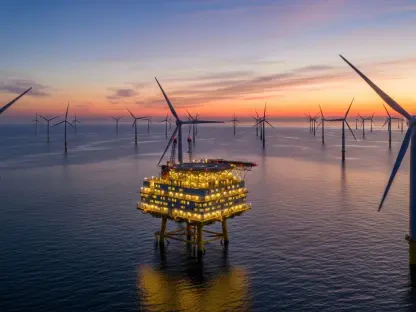The global transition to electric mobility is progressing rapidly, significantly influencing both the energy and automotive sectors. Electric car sales remain robust in 2024, with an estimated 17 million units sold, representing over 20% of all cars sold worldwide. However, the growth of electric car sales has been uneven across different markets. Countries such as Australia, Brazil, Canada, China, and Indonesia have shown strong sales, while Germany, Italy, Japan, and Korea have experienced declines in the first three quarters of 2024 compared to the same period in 2023. Various car manufacturers are adjusting their electrification strategies to address these complex market dynamics.
The Importance of Affordability in Electric Car Adoption
A critical factor influencing the pace of electric car adoption is the affordability of electric cars. While electric vehicles typically have lower total costs of ownership over their lifetimes due to reduced fuel and maintenance expenses, reducing their upfront prices is crucial for boosting consumer uptake. This trend is particularly evident in China, where small, affordable electric models are driving mass adoption. In 2023, about 60% of electric cars sold in China were priced below their internal combustion engine (ICE) counterparts, thanks to decades of policy support, increasing competition, and falling battery prices.
In contrast, electric cars sold in Europe tend to be larger, premium models, and thus remain pricier than their ICE equivalents. In 2022 and 2023, battery electric vehicles (BEVs) in Europe cost approximately 40% more than conventional cars, despite declines in average battery prices during that period. According to a 2023 survey from the European Commission, the purchase price remains the main barrier preventing European consumers from adopting electric cars, with the median price that consumers are willing to pay being EUR 20,000. This price gap underscores the necessity for more affordable electric options to accelerate adoption across different market segments.
Market Dynamics and Manufacturer Strategies
Various car manufacturers are adjusting their electrification strategies to address complex market dynamics. For example, Volvo revised its target to achieve 100% fully electric cars by 2030 to include up to 10% hybrid sales by 2026 to ensure higher profitability. Similarly, Ford canceled plans to launch a new electric SUV and delayed its next electric truck, citing concerns about profitability and competitive pressures. Other companies like Toyota, Mercedes-Benz, and Stellantis are also reportedly reevaluating their near-term electric car sales forecasts. These strategic pivots indicate the balancing act between advancing electric vehicle (EV) technology and maintaining economic viability amid competitive and regulatory pressures.
Despite these challenges, the global momentum behind electric cars remains strong in the medium term. Under current policy settings, electric cars are projected to account for around 45% of car sales by 2030 and 55% by 2035. The emphasis on more affordable, smaller electric vehicles as essential for faster mass-market adoption is clear. As the industry adapts to changing market conditions, the push for affordability in electric cars becomes a central tactic to ensure broad access and appeal.
Regional Variations in Electric Car Pricing
In the United States, the BEV price premium fell from 50% in 2022 to 20% in 2023, driven by significant price cuts from Tesla. The company repeatedly slashed the prices of its best-selling Model Y between mid-2022 and early 2024, influencing market dynamics significantly. Despite these reductions, the cheapest electric models in 2023 were priced around USD 30,000, and only five of the 25 models launched in 2024 were priced below USD 50,000, while the best-selling small and medium ICE options were under USD 25,000. This price discrepancy highlights the need for further reductions to make BEVs more competitively priced against conventional vehicles.
Emerging markets face similar challenges. In India, Tata Motors released a few electric models priced under USD 15,000 in 2023, but the best-selling ICE cars averaged around USD 7,000. A notable exception is Vietnam, where local carmaker VinFast launched a mini electric SUV priced under USD 13,000 in 2024, competing effectively with both existing Chinese electric models and the cheapest conventional alternatives. These efforts to lower prices demonstrate a concerted effort to provide affordable electric options in various regional markets, addressing local economic realities and consumer budgets.
The Impact of Larger Vehicle Trends
Overall, electric cars are becoming less expensive, but the trend of larger vehicles in both the electric and ICE markets partially offsets these gains. In 2023, nearly 60% of global BEV sales were for large or SUV-type models, more than twice the share seen five years earlier. This trend was even more pronounced in Europe and the United States, where these models accounted for over 60% and 75% of the market, respectively. In countries like India, Indonesia, and Thailand, large models or SUVs constituted between 55% and 65% of electric car sales, reaching over 85% in Malaysia. By 2028, nearly three-quarters of new electric models launched globally are projected to fall within these segments.
The growing preference for larger vehicles presents a challenge to reducing overall vehicle costs. Larger vehicles often come with higher production costs, translating to higher retail prices. Additionally, bigger vehicles have higher energy requirements, potentially offsetting some environmental benefits. Yet, automakers continue to respond to consumer preferences for more spacious and versatile vehicles, balancing size and price to find the most appealing offerings to drive EV adoption.
Market Competition and Policy Support
The global shift towards electric vehicles is progressing swiftly, dramatically impacting both the energy and automotive industries. In 2024, electric car sales remain strong, with an estimated 17 million units sold, making up over 20% of all cars sold worldwide. This growth, however, is not uniform across all markets. Countries like Australia, Brazil, Canada, China, and Indonesia have demonstrated robust sales in electric cars. In contrast, nations such as Germany, Italy, Japan, and Korea have seen declines in sales during the first three quarters of 2024 compared to the same timeframe in 2023.
This uneven growth has led various car manufacturers to rethink and adjust their electrification strategies to better manage these complex market conditions. They are optimizing production processes, developing new models, and investing in advanced technologies to cater to the varying demands and regulations of different countries. The adoption of electric vehicles is influenced by factors such as government incentives, charging infrastructure, consumer awareness, and economic conditions. Despite these challenges, the electric car market’s overall upward trajectory suggests a lasting transformation in the global automotive landscape, promoting a more sustainable future.









